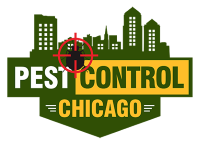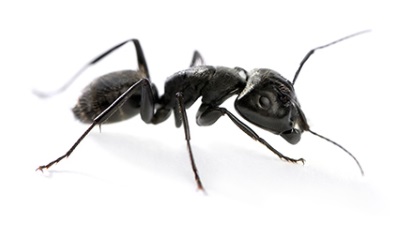Pest Control Chicago for Dummies
Pest Control Chicago for Dummies
Blog Article
4 Simple Techniques For Pest Control Chicago
Table of ContentsSome Known Details About Pest Control Chicago Indicators on Pest Control Chicago You Need To KnowHow Pest Control Chicago can Save You Time, Stress, and Money.The Best Guide To Pest Control ChicagoThe smart Trick of Pest Control Chicago That Nobody is Talking AboutLittle Known Facts About Pest Control Chicago.
Planting or harvesting a crop before (or after) an insect exists decreases bug damage by evasion. Capturing and calculating a pest's expanding level days can help with preparing around a parasite's lifecycle. Damage tolerance can often be achieved by planting a crop early so that the plants are stronger, much more resistant, and more tolerant to damages by the time insect parasites are present.
By creating a small, regulated area that the bugs favor, it is feasible to divert insects away from the primary crop. Two techniques for this are trap cropping and strip harvesting. is growing a preferred host plant of an insect bug near the main crop that is to be shielded.
If needed, the parasites can then be killed in the trap crop. Trap plants can be any type of varieties that the bug preferseven be the exact same species as the key crop - Residential pest control Chicago. If the trap crop is the very same types as the primary crop, it needs to be planted at once that will best lure the insect far from the main plant
The 5-Minute Rule for Pest Control Chicago
 This practice serves when gathering a catch crop due to the fact that it preserves some habitat for the parasite. Consequently, the insect does not move to find new environment in a nearby greater value or more vulnerable plant. https://pest-control-chicago-47383543.hubspotpagebuilder.com/blog/bug-removal-experts-in-chicago-your-go-to-solution-for-a-pest-free-home. The methods currently pointed out concentrate on lowering plant exposure to insect bugs, however it is also possible to decrease yield loss also when insect damages happens
This practice serves when gathering a catch crop due to the fact that it preserves some habitat for the parasite. Consequently, the insect does not move to find new environment in a nearby greater value or more vulnerable plant. https://pest-control-chicago-47383543.hubspotpagebuilder.com/blog/bug-removal-experts-in-chicago-your-go-to-solution-for-a-pest-free-home. The methods currently pointed out concentrate on lowering plant exposure to insect bugs, however it is also possible to decrease yield loss also when insect damages happensPlant them properly and maintain the plants healthy and balanced by thoroughly watering, fertilizing, and trimming them. If a bug or disease causes undesirable damage despite preventative efforts, pick a reliable monitoring technique that will have the least amount of influence on other living animals and the setting.
The 5-Second Trick For Pest Control Chicago
 Look for signs the plant exhibits as an outcome of insect task. Examine your plants commonly. Determine your plants to be certain that the twisted fallen leaves, unusual coloration, or strange-looking structures you see are not a normal component of the plant. Attempt to eliminate site-related problems by seeing to it that the dirt kind, drainage problems, fertility degree, and various other environmental problems agree with for the plant.
Look for signs the plant exhibits as an outcome of insect task. Examine your plants commonly. Determine your plants to be certain that the twisted fallen leaves, unusual coloration, or strange-looking structures you see are not a normal component of the plant. Attempt to eliminate site-related problems by seeing to it that the dirt kind, drainage problems, fertility degree, and various other environmental problems agree with for the plant.Insects and termites typically are linked with specific plants, and they comply with specific advancement and actions patterns as the period advances. Usage reference publications from the library or garden facility to determine pests. If you can not discover an exact description there, consult somebody in your regional expansion office. Find out about the bug's life process, behavior, and natural adversaries.
If so, an application of a nonselective insecticide could eliminate them, enabling the pest population to rebound uninhibited by killers and parasites, which might have been providing significant control. If a control is needed, take into consideration physical or biorational methods initially. If they are unavailable or unwise, you might need to meticulously use a conventional chemical control.
The Definitive Guide for Pest Control Chicago
 Some aphids and mites can be knocked off by splashing the plant with water. You can use traps to capture specific bugs, and barriers to safeguard plants from insect strike or condition infection.
Some aphids and mites can be knocked off by splashing the plant with water. You can use traps to capture specific bugs, and barriers to safeguard plants from insect strike or condition infection.In some situations, the ideal solution may be physically getting rid of the plant and changing it with one that will site not be influenced by the parasite or condition. The very first team consists of living microorganisms that can eliminate the pest.
Parasites survive and commonly kill another microorganism, called the host. Some parasitic wasps use caterpillars, whiteflies, aphids, and soft scales as hosts. An example of an approach that makes use of a normally taking place biochemical is the germs Bacillus thuringiensis (Bt). Bt includes a protein that is harmful to specific pests, yet harmless to other organisms.
The Pest Control Chicago Diaries
When the delicate bug parasite eats the splashed fallen leaves, it will certainly ingest the protein and be eliminated. Conventional chemicals are utilized just as a last hope in an IPM program, yet often are one of the most reliable methods of control. To have the best effect, these materials need to be used on a details component of the plant when the pest is most susceptible.
Oftentimes, ecologically risk-free chemicals such as gardening oil or insecticidal soap work choices - https://pxhere.com/en/photographer-me/4380200. Again, applications should be timed very carefully to have the best impact on the bug insect population. Because they have no recurring activity after they have dried, soaps and oils are typically the option that is the least turbulent to populaces of useful microorganisms
These words, from the very least poisonous to most hazardous are: "caution," "caution," and "risk." Use these words as standards to help you pick the least dangerous product among the reliable choices. For a lot of landscape pests, you require to think about chemicals in only the initial 2 categories. Some pesticide solutions can be applied just by applicators with unique training and who are licensed by the state's division of farming.
6 Easy Facts About Pest Control Chicago Described
Refer to the Woody Ornamental Pest, Mite, and Condition Monitoring Overview, released by Penn State Expansion, or to an additional existing recommendation for a listing of materials that are registered for usage on plants in your state. Review the tag to make sure that you have selected an item that works versus the parasite you have recognized, and choose your timing based on professional suggestions.
Report this page